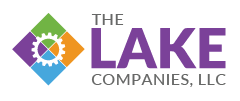The Real-Time Advantage in Manufacturing

More and more manufacturers are realizing the potential of the Internet of Things (IoT) through data capture on machine quality, reliability, and performance, all in real-time. From the shop floor to the top floor, real-time data is one of the most powerful catalysts enabling greater manufacturing growth.
The old-school manufacturing procedures still existing in many job shops force managers to wait on reports. Sometimes hours, days or even weeks go by so that managers are basing their decisions on yesterday’s numbers. Imagine if Wall Street or football coaching were played that way. Football teams that cannot make adjustments in real-time, or at least by halftime, are doomed to lose.
The “smart factory” as Deloitte likes to term it, refers to moving from the traditional automation to a fully connected and flexible system that takes advantage of a continuous data stream from connected operations and production systems to monitor and adjust to conditions. This results in a more efficient and agile manufacturing system with less production downtime, and a greater ability to predict and adjust to changes in the facility or broader network, possibly leading to better positioning in the competitive marketplace.
According to Deloitte, one of the largest professional services organization in the world, The concept of adopting and implementing a smart factory solution can feel complicated, even insurmountable. However, rapid technology changes and trends have made the shift toward a more flexible, adaptive production system almost an imperative for manufacturers who wish to either remain competitive or disrupt their competition. By thinking big and considering the possibilities, starting small with manageable components, and scaling quickly to grow the operations, the promise and benefits of the smart factory can be realized.
Advantages of Operating in Real-Time
- Improved collaboration with suppliers and customers
- Improved collaboration across departments—ie. between production and product development
- Reliable and predictable production capacity
- Increased machine uptime and production efficiency
- Live metrics and tools to support quick and consistent decision making
- Real-time linkages to customer demand forecasts
- Transparent customer order taking
- Flexible and adaptable scheduling and changeovers
- Implementation of product changes to see impact in real time
There has never been a better time to transform your organization to real-time operations. The cost of sensors and technology is plummeting and job shop managers, maintenance technicians, factory floor workers, suppliers and customers are growing to expect this type of scenario.
Digitizing your operations will give your real-time decision-making power. You will quickly see the value of leveraging this data on the shop floor for continuous operational improvement.

